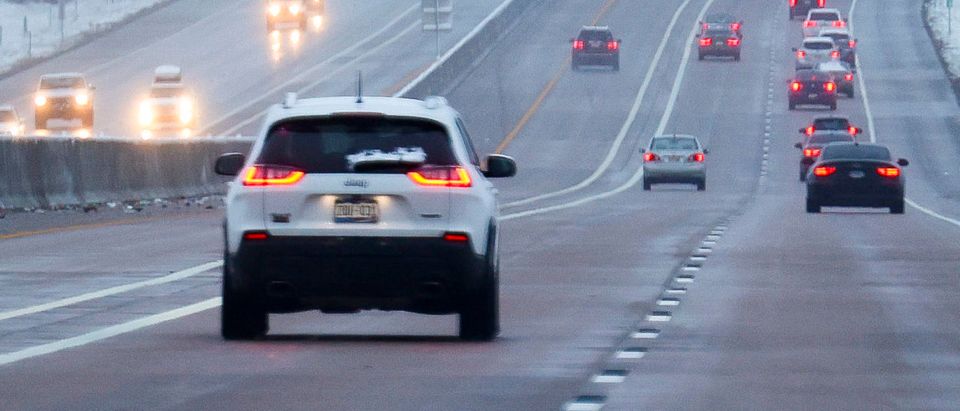Editor’s note: We endeavor to bring you the top voices on current events representing a range of perspectives. Below is a column arguing that President Joe Biden’s infrastructure plan will not address actual infrastructure problems. You can find a counterpoint here, where Vogel Group Chief Operating Officer Samir Kapadia argues that Biden’s plan will help achieve a long-term vision for the U.S. economy.
We can make transportation policy by finding out how people are going to travel and then making that travel as safe, efficient and environmentally friendly as possible. Or we can fantasize how we wish people would travel and design a transportation system that fulfills those wishes.
President Biden’s infrastructure plans fall firmly in the realm of fantasy. Although urban transit and Amtrak carried less than 1% of all passenger travel before the pandemic, Biden’s American Jobs Plan would have given them almost half of all transportation dollars. Even the White House-Republican compromise plan devotes more than 40% of transportation funds to these two forms of travel.
Biden imagines that giving more money to transit and Amtrak will significantly increase their shares of travel. Yet in the last 50 years taxpayers have given $100 billion (in today’s dollars) to Amtrak and more than $1.5 trillion to urban transit, only to see their shares of travel decline.
This decline has been hastened by the pandemic, which has accelerated decentralization trends that reduce transit’s importance and has led people to be wary of all forms of mass transportation. Yet none of the infrastructure bills take the pandemic into account.
Amtrak and transit declined for good reasons: intercity passenger trains and mass transit are expensive and slow. Including all user costs and subsidies, urban transit costs five times as much, per passenger-mile, as auto driving, while Amtrak spends four times as much per passenger-mile as the airlines.
University of Minnesota researchers have shown that transit is so slow that the typical urban American can reach almost twice as many jobs in 20 minutes by car as 60 minutes by transit. Even bicyclists can reach more jobs than transit riders in trips of 50 minutes or less.
Transit doesn’t even work for people who don’t have cars. Census data show that most American workers who live in households without cars didn’t take transit to work in 2019.
Why is Congress even considering an infrastructure bill, other than to fulfill Amtrak Joe Biden’s train fantasies? Engineering and construction companies have created an entirely phony infrastructure crisis in order to get the federal government to spend more money on projects they will design and build. But there really is no infrastructure crisis.
A few bridges have collapsed in the last few years, but not due to poor maintenance. One fell because of a design flaw. Another because a truck that was too big tried to cross it. In fact, the United States has not seen a roadway bridge failure due to poor maintenance since 1989.
Since then, regular inspections have shown that the number of highway bridges in poor condition have fallen from nearly 138,000 in 1990 to 45,000 in 2020. The average smoothness of roads has also steadily improved.
A close look at the data reveals that infrastructure that is in the best shape is infrastructure that is paid for out of user fees. Managers of such infrastructure know their revenues will decline if they let it deteriorate so they tend to keep it in good condition. Politicians, however, are more likely to fund grandiose new projects than to maintain those projects.
For example, about 7% of bridges were in poor condition in 2020. This included 2% of toll bridges and 5% of state highway bridges, which are mainly funded out of gas taxes and other highway user fees, but 12% of bridges owned by city and county governments, whose transportation programs are funded largely out of property or sales taxes.
This means Biden’s infrastructure plans, which would require hundreds of billions to trillions of dollars of deficit spending, are exactly the wrong way to go. Instead of spending political dollars, Congress should find better ways to fund infrastructure, including airports, highways, rail lines and other systems, out of user fees.
For example, gas taxes helped pay for the Interstate Highway System and other major roads, but they are a poor sort of user fee because they don’t adjust for inflation or more fuel-efficient vehicles. They also fail to give users good signals about costs or highway agencies good signals about what users value.
All these problems can be fixed by mileage-based user fees. Congress should encourage such fees provided they protect people’s privacy and the fees go to the roads people drive on. Congress could also improve airport user fees.
Infrastructure is important, but how we fund infrastructure is just as important as the infrastructure itself. By unnecessarily imposing debts on future generations, the Biden plan is the wrong solution to the nation’s problems.
Randal O’Toole is a senior fellow with the Cato Institute specializing in transportation policy and author of Romance of the Rails: Why the Passenger Trains We Love Are Not the Transportation We Need.


